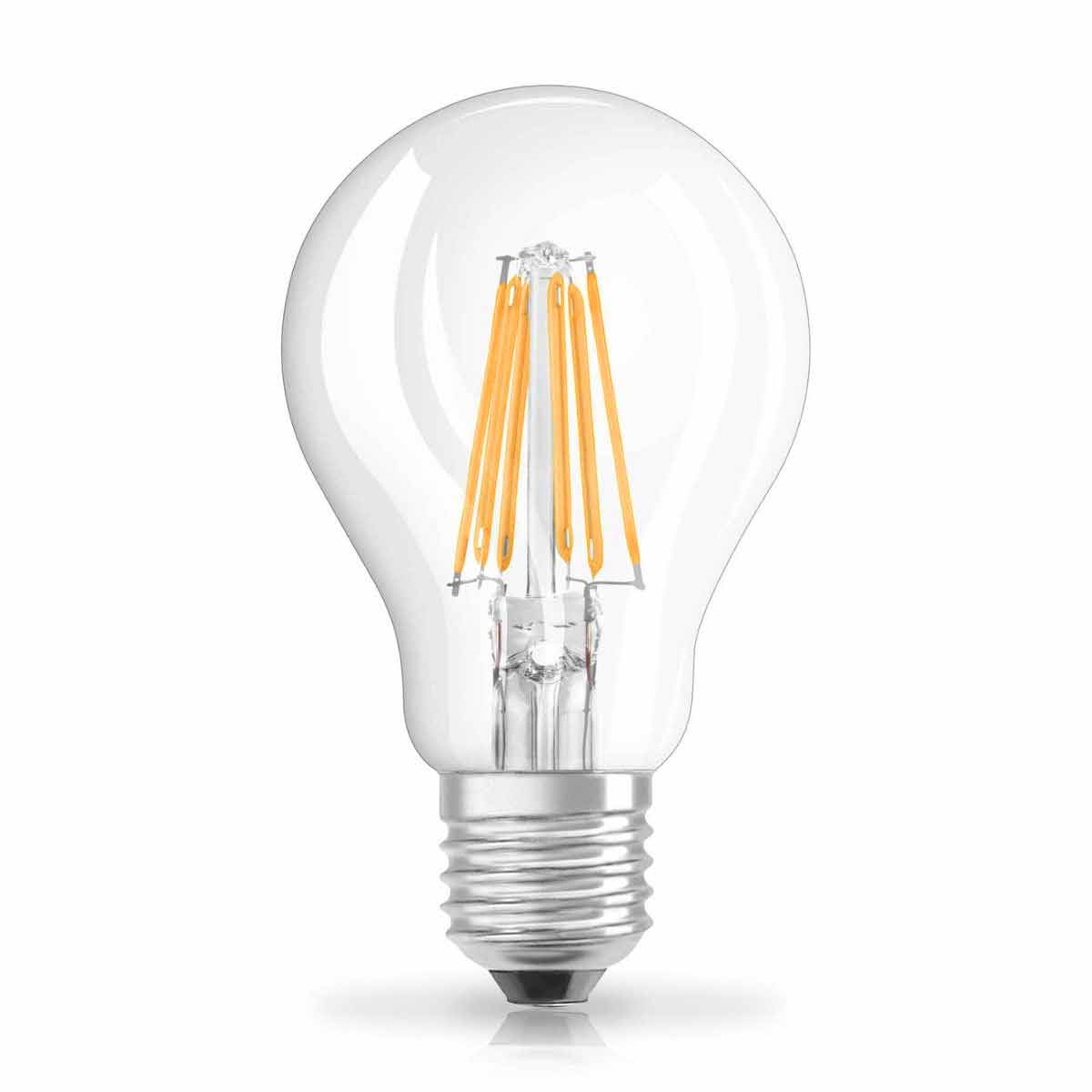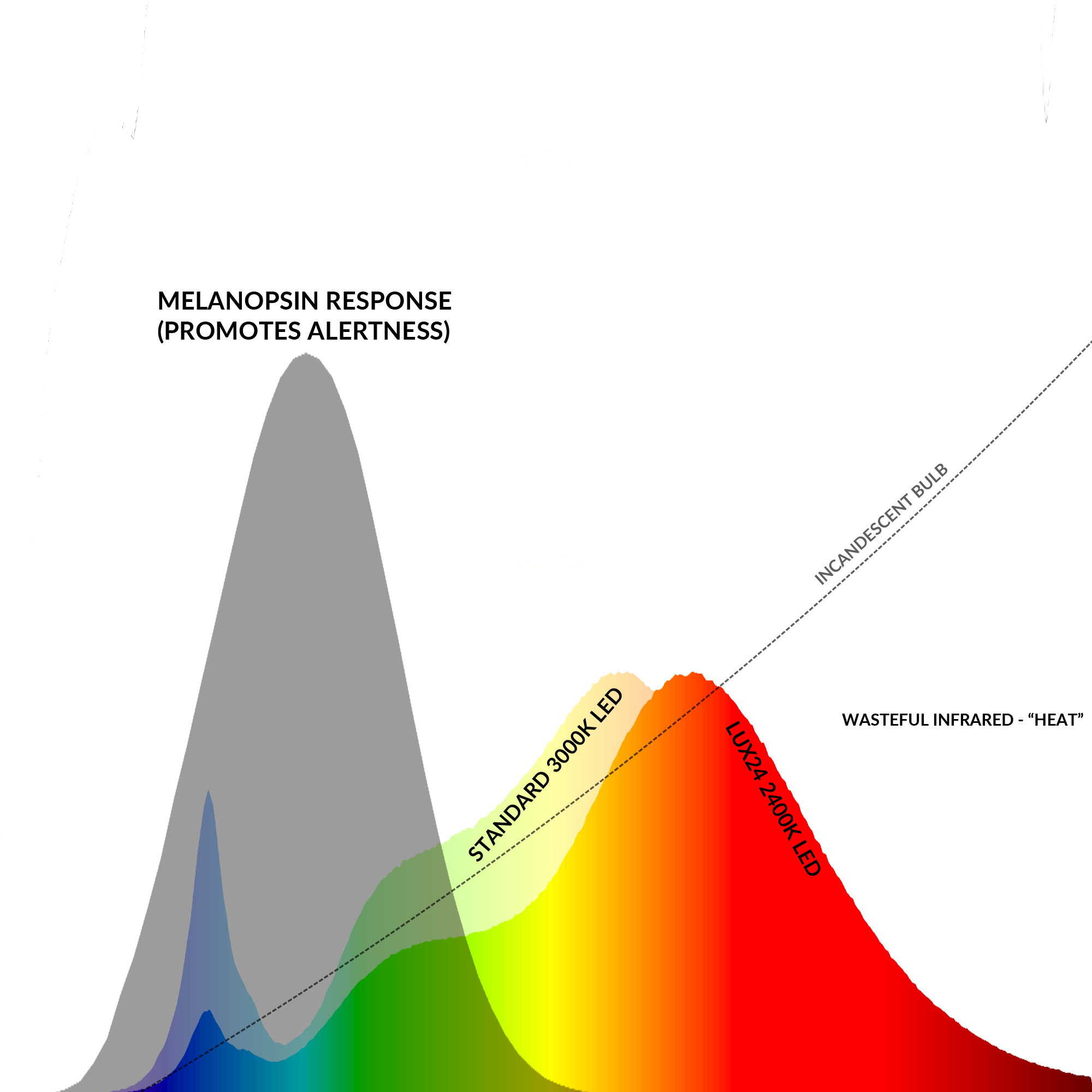
Having Trouble Falling Asleep?
Exposure to light rich in blue wavelengths during evening hours can be detrimental to sleep quality.1 Blue light is not only coming from smartphones, computer screens and tablets - it's also abundant in regular light bulbs.
Lux24™ LED bulbs are designed at the spectral level to limit disruption to restful sleep by utilizing a proprietary blend of long wavelength phosphors, which limit the amount of blue light.


Blue Light and Melatonin
Blue light is known to suppress the production of melatonin2, a hormone that promotes sleepiness.
With a special focus on reducing the amount of blue-rich wavelengths, Lux24™ Circadian LED bulbs allow for the body's natural production of melatonin.
More on blue light →A Spectral Look At Lux24™
Energy-saving LED bulbs attempt to mimic the look and the "warm" color of an incandescent bulb, but a closer look at the light spectrum reveals that there is a significant amount of blue wavelength content.
Taking a closer look at the spectral power distribution of these light sources reveals a significant amount of blue-rich wavelengths between 450 and 510 nm, which is also the peak sensitivity wavelengths for melanopsin, a pigment in our eyes that triggers the suppression of melatonin.


A Spectral Look At Lux24™
Energy-saving LED bulbs attempt to mimic the look and the "warm" color of an incandescent bulb, but a closer look at the light spectrum reveals that there is a significant amount of blue wavelength content.
Taking a closer look at the spectral power distribution of these light sources reveals a significant amount of blue-rich wavelengths between 450 and 510 nm, which is also the peak sensitivity wavelengths for melanopsin, a pigment in our eyes that triggers the suppression of melatonin.
- M/P Ratio
- 0.3
- 0.6
- 0.9
- 1.2
← Less More →
Measuring and Comparing M/P Ratios
A light source's melanopic to photopic lux ratio (M/P ratio) gives us a useful way to directly compare the effect of multiple light sources on melanopsin response.
The M/P ratio represents the impact on melanopsin response (melanopic lux) compared to the amount of perceived brightness (photopic lux). A lower ratio indicates a lesser impact on melanopsin suppression for a given amount of brightness.
Lux24™ LED bulbs have a M/P ratio of 0.39. What this means is that for every 100 lux, only 39 "melanopic" lux are emitted.
Soft and Comfortable Light
Lux24 Circadian LED Bulbs provide soft and warm light, perfect for reading and other evening activities. Brightness is equivalent to a 40W incandescent bulb. Colors appear vibrant and natural.


Lux24™ Circadian LED Bulb
• 40W equivalent brightness using just 5W
• M/P ratio of 0.39 for limited circadian impact
• 2400K and 95 CRI for optimal appearance and visual acuity
• Classic A19 shape and E26 base fits virtually all light bulb sockets
• Dimmable down to 0% brightness
Want to learn more?
Visit our product support center to learn more about our products. Download spec sheets, test reports and reach out to us with any questions.